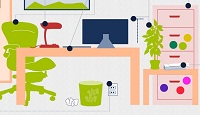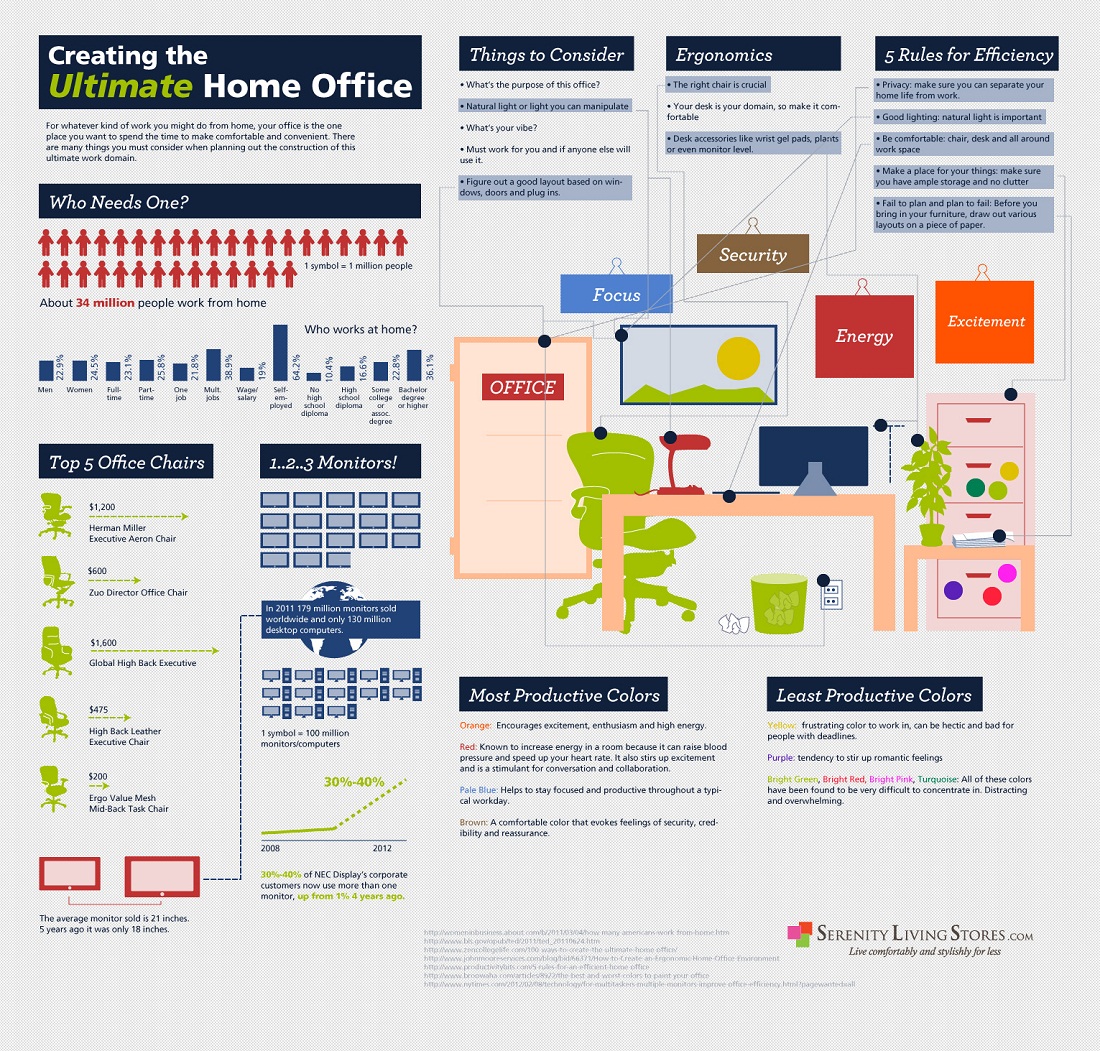 Many online-based workers don’t makes a big deal about their home office (including me). For these kind of people (and again, me), it doesn’t really matter where to work as long as there’s an internet connection in the area. But of course, there is also the other kind of people…
Many online-based workers don’t makes a big deal about their home office (including me). For these kind of people (and again, me), it doesn’t really matter where to work as long as there’s an internet connection in the area. But of course, there is also the other kind of people…
For some people the difference between productivity and futility can be centered around their working environment. Even though, as I stated before I pretty much can work everywhere, I can totally understand how unfriendly environment can get people distracted and not as efficient as they would like to be.
But because in this case I’m definitely no expert, the fine fellows at Serenity Living have made a lovely infographic that could assist all you online-based workers to create your own friendly home office. So I’ll let the infographic speak for itself while I take care of all the other web-based coverage…
Here’s the textual version first (followed by the infographic):
There are 34 million Americans who work from home. Here are their demographics:
- 22.9% of men, 24.5% of women.
- 23.1% as a full time job, 25.8% as a part-time job and 38.9% multiple jobs.
- 19% work on salary and 64.2% are self employed.
- 10.4% don’t have high school diploma, 16.6% have high school diploma, 22.8% have some college degree and 36.1% have bachelor degree or higher.
The top five office chairs:
- Herman Miller, Executive Aeron Chair ($1,200)
- Zuo Director Office Chair ($600)
- Global High Back Executive ($1,600)
- High Back Leather Executive Chair ($475)
- Ergo Value Mesh Mid-Back Task Chair ($200)
In 2011, 179 million monitors sold worldwide and only 130 million desktop computers (1.38 monitors per computer). The average monitor sold is 21 inches when 5 years ago it was 18 inches.
Things to consider:
- What’s the purpose of this office?
- Natural light or light you can manipulate
- What’s your vibe?
- Must work for you and if anyone else will use it.
- Figure out a good layout based on windows, doors and plugins.
Ergonomics:
- The right chair is crucial.
- Your desk is your domain, so make it comfortable.
- Desk accessories like wrist gel pads, plants or even monitor level.
Five rules for efficiency:
- Privacy: make sure you can separate your home life from work.
- Good lighting: natural lighting is important.
- Be comfortable: Chair, desk, and all around work space.
- Make a place for your things: make sure you have ample storage and no clutter.
- Fail to plan an plan to fail: before you bring in your furniture, draw out various layouts on a piece of paper.
Most productive colors:
- Orange: Encourage excitement, enthusiasm and high energy.
- Red: Known to increase energy in room because it can raise blood pressure and speed up your heart rate. It also stirs up excitement and is a stimulant for conversation and collaboration.
- Pale blue: Helps to stay focused and productive throughout a typical workday.
- Brown: A comfortable color that evokes feelings of security, credibility and reassurance.
Least productive color:
- Yellow: Frustrating color to work in, can be hectic and bad for people with deadlines.
- Purple: Tendency to stir up romantic feelings.
- Bright green, bright red, bright pink, turquoise: All of these colors have been found to be very difficult to concentrate in. Distracting and overwhelming.
Here’s the infographic (click on it to enlarge):
